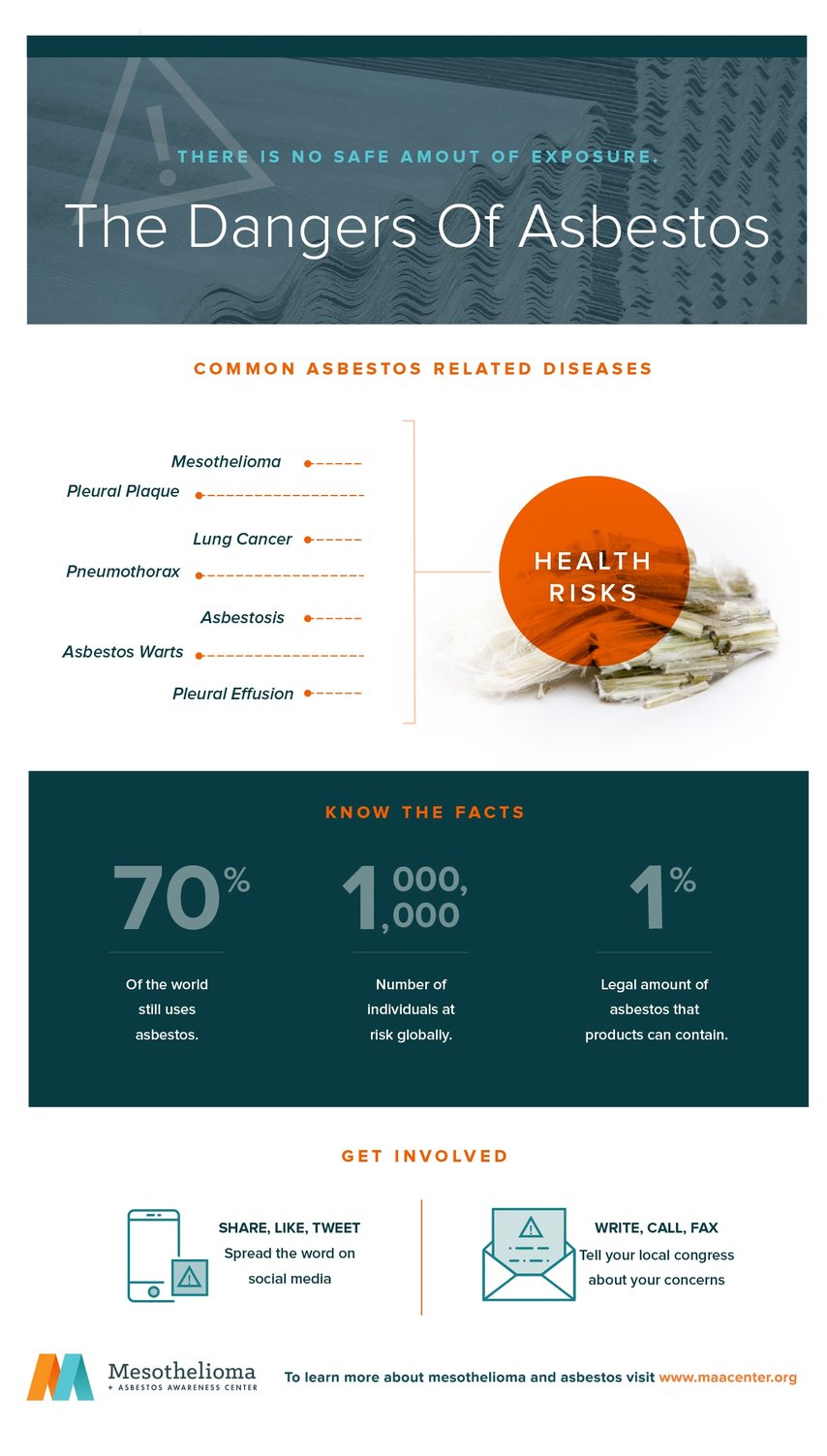
In our second blog dedicated to highlighting the effects of asbestos during Mesothelioma Awareness Month (and just in time for Mesothelioma Awareness Day taking place tomorrow), Alison Grimes from the MAA Center, talks to us about the respiratory health hazards of asbestos and particulate matter.
Indoor and ambient (outdoor) air quality topics have been a global concern for a number of years. On the 27th of September 2016, the World Health Organization (WHO) reported that 92% of the world’s population lived in places where air quality levels exceed WHO limits. Imagine an entire global population breathing in air that will have a direct and negative effect on its health.
Nearly three million deaths are linked to exposure to outdoor air pollution each year, and this is without taking into account the hazards associated with indoor air pollution. The average adult will actually spend 90% of their time indoors, where concentrations of some pollutants are often two to five times higher than outdoor air concentrations.
This year, for World Environmental Health and Mesothelioma Awareness Day on September 26th, we’re focusing on two respiratory health hazards to raise awareness and prevent exposure to each: asbestos and particulate matter.
What role does asbestos play in mesothelioma?
Asbestos is a pollutant often associated with:
- dangerous carcinogens
- pesticides
- lead
- radon gas, and
Asbestos is an entirely natural, silicate mineral that is found in the environment in various parts of the world. Due to its fibrous malleability and fire-resistant properties, its use in building materials, construction and manufactured products, resulted in popular demand of its mining as a natural resource worldwide. However, it soon became apparent that when asbestos fibres are airborne, inhaled or ingested, the health risks are often severely life threatening.
Asbestos has been proven to cause the following:
- Asbestosis
- Lung cancer
- Pleural effusion
- Pleural plaque
- Pneumothorax
- Asbestos warts
- Mesothelioma
When asbestos fibres are lodged into the lining of the abdomen, heart or lungs, they can form scar tissue anywhere between ten and fifty years following exposure and develop into one of three different types of mesothelioma. Once diagnosed, mesothelioma patients face limited life expectancy and often do not experience symptoms of the disease (and become aware of the disease) until the cancer has progressed. Asbestos is the only scientifically-proven cause of mesothelioma and is 99% preventable by avoiding exposure to it.
What role does particulate matter play in mesothelioma?
Particulate matter (PM) is a widespread air pollutant comprising solid and liquid particles suspended in the air. Commonly, sulfates, nitrates, ammonium and other inorganic icons, such as sodium, potassium, calcium, magnesium, chloride and even organic and elemental carbon, crustal material, particle bound water, metals and aromatic hydrocarbon particles, make up particulate matter.
Particulate matter can be directly emitted into the air or formed in the atmosphere from gases and organic compounds that are inhalable.
Between the two particulate matter categories, PM10 (particles in the 2.5–10 micro unit range) and PM2.5 (particles less than 2.5 micro units), particulate matter is more dangerous when the particles are smaller because they can more easily penetrate the thoracic region of the respiratory system. Whether exposed to particulate matter long term or short term, respiratory health concerns associated with particulate matter are well documented. As a result, the following become quite common when one is exposed to particulate matter:
- Respiratory and cardiovascular morbidity
- Aggravation of asthma
- Respiratory symptoms
- Hospital admissions
- Cardiovascular and respiratory disease
- Lung cancer
Protect yourself from asbestos and particulate matter exposure. Help inform others while understanding that even contained asbestos can pose a future risk to health if disturbed and there is no safe level of asbestos exposure. PM itself is a widespread air pollutant, present wherever people live and its presence with air pollution can be reduced using current technologies. Be aware and informed by checking the quality of air near you, today.




